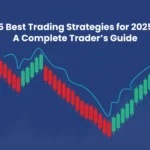Aeonscope’s dynamic in-game economy transforms virtual gaming into an immersive, player-driven marketplace experience.
Understanding Aeonscope’s In-Game Economy
Aeonscope’s in-game economy is a sophisticated system that mirrors real-world market dynamics. It integrates supply and demand principles, allowing players to engage in trading, crafting, and resource management. This economy is not just a backdrop but a core component of the gameplay, influencing player decisions and strategies.
Key Features of Aeonscope’s Virtual Marketplace
1. Dynamic Pricing Mechanisms
Prices within Aeonscope fluctuate based on player activities and market trends. This dynamic pricing ensures that the value of items reflects their rarity and demand, encouraging players to strategize their trading and crafting activities.
2. Player-Driven Trade Systems
Aeonscope empowers players to establish their own trade networks. Through in-game marketplaces, players can buy, sell, and barter items, creating a vibrant economy that thrives on player interaction and entrepreneurship.
3. Crafting and Resource Management
Players can gather resources and craft items, which can then be used or traded within the game. This system adds depth to the economy, as players must manage resources wisely to maximize their economic potential.
4. Integration of AI for Market Analysis
Aeonscope utilizes AI to analyze market trends and provide players with insights into profitable trading opportunities. This feature aids players in making informed economic decisions, enhancing the realism of the virtual marketplace.
Impact on Player Engagement
The in-game economy significantly enhances player engagement by introducing economic challenges and opportunities. Players are motivated to participate in the economy to acquire better equipment, gain wealth, and achieve status within the game. This economic layer adds a strategic dimension to the gameplay, appealing to a broad range of players.
Comparative Analysis with Other Virtual Economies
Aeonscope’s economy stands out when compared to other virtual economies like those in “EVE Online” or “World of Warcraft.” While these games have established economic systems, Aeonscope’s integration of AI and dynamic pricing offers a more responsive and player-centric economic experience.
Challenges and Considerations
Managing a complex in-game economy presents challenges, such as preventing inflation and ensuring fair trading practices. Aeonscope addresses these issues through regulatory mechanisms and continuous monitoring to maintain economic balance and fairness.
Future Developments
Looking ahead, Aeonscope plans to expand its economic systems by incorporating blockchain technology for secure transactions and introducing new economic roles for players. These developments aim to further immerse players in the virtual economy and enhance the overall gaming experience.
FAQs
Q1: How does Aeonscope’s in-game economy differ from traditional game economies?
Aeonscope’s economy is dynamic and player-driven, with real-time pricing and AI integration, offering a more immersive and responsive economic experience compared to traditional static game economies.
Q2: Can players influence the in-game economy?
Yes, players can impact the economy through trading, crafting, and resource management, affecting supply and demand dynamics within the game.
Q3: Is real money involved in Aeonscope’s economy?
Currently, Aeonscope’s economy operates with in-game currency, but future developments may include blockchain integration for secure, real-world transactions.
Q4: How does AI enhance the in-game economy?
AI analyzes market trends and provides players with insights, helping them make informed economic decisions and strategies.
Q5: What measures are in place to prevent economic imbalance?
Aeonscope employs regulatory mechanisms and continuous monitoring to prevent issues like inflation and ensure fair trading practices within the game.










